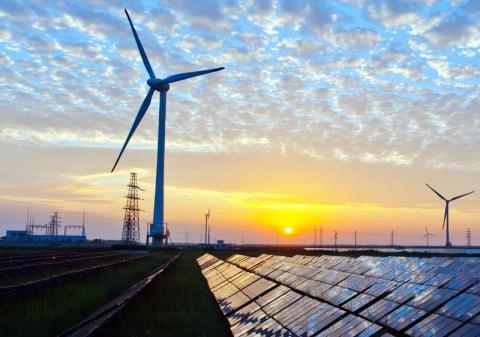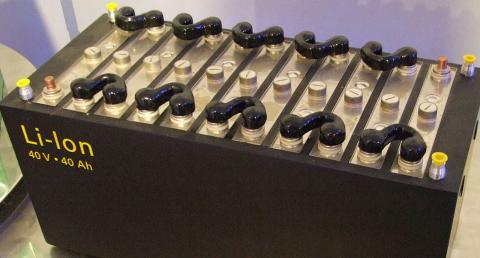- Project HENSA (High Efficiency Neutron Spectrometry Array) aims to characterize the neutron background produced by cosmic rays and its connection with solar activity
- The results will enable to better understand phenomena such as coronal mass ejections taking place at the Sun
- The obtained insights will support the efforts to diminish the impact of electronics-disrupting events with their origin in neutron flows of cosmic origin
Researchers of the Institute of Corpuscular Physics (IFIC, CSIC – Universitat de València) participate in the HENSA project, an initiative that measures the flow of neutrons from cosmic rays at various geographic locations. The flow of these particles relates to sporadic failure of microelectronic systems. Such failure has the potential, for instance, to negatively affect telecommunications and water or air navigation systems. It is also responsible of part of the radiation that travellers and flight crew are exposed to during commercial flights. Enhanced knowledge about this radiation can provide valuable information about the interaction of solar activity with the atmosphere, the so-called space climate.

Project HENSA (High Efficiency Neutron Spectrometry Array) aims to characterize the neutron background produced by cosmic rays during the period of lesser solar activity. This minimum is dependent on the magnetic solar cycle, which has a period of 11 years, which started in December 2019. The minimum took place in the year 2020 between the months of February and November. During the period of minimum activity, less particles originating from the Sun arrive at the Earth. As a result, that was precisely the best moment to measure the neutron spectrum at various locations and altitudes across the Spanish territory.
The measurement of secondary cosmic rays
Neutrons are part of secondary cosmic rays, that is, those cosmic rays that are formed at the high atmosphere. Secondary cosmic rays originate when primary cosmic rays (i.e. those directly arrived from space) hit atoms at the atmosphere. Characterising well the resulting flux of neutrons is of great relevance for the security of electronic telecommunication and navigation systems, as the neutron flux is capable of causing “Single Event Upset” (SEU) events, malfunctions in microelectronic systems attributed to the collision of neutrons with chips of the affected electronic device. The collision can cause ionization at a sensitive node of the micro-electronic device. Unlike other related disruptions, SEU events do not generally cause permanent damage, but still can have relevant consequences.

A better characterization of the phenomenon is also of great importance due to the information it can provide about solar events such as coronal mass ejections, which violently release matter and radiation from the Sun outwards. Coronal mass ejections are more common during the point of highest activity of the solar cycle and have relevant effects on the electromagnetic field of the Earth, as well as on electronic systems and on the storage and transport of electric energy. To be able to study these extreme events it is necessary to understand the neutron background radiation present under normal circumstances, which is part of the natural radiation of our planet and of the regular radiation exposure of the the crew of commercial flights.
Where and who participated?
HENSA is a high-efficiency neutron spectrophotometer designed for the characterisation of low-radioactivity environmental neutron background, such as for instance at underground research labs, but also at the terrestrial surface level. The developer team is composed of scientists and technicians of IFIC and of the Institute of Energy Technologies (INTE-UPC), and the Complutense University of Madrid (UCM). Also contribute the Canfranc Subterranean Laboratory (LSC) and researchers of the Canada’s Particle Accelerator Centre (TRIUMF) and of the GSI Helmholtz Centre for Heavy Ion Research (GSI, Germany).

Measurements were firstly taken at the North of the country. After the summer, the instrument was installed at the centre and South of the country. In its first Spanish measurement campaign, HENSA was installed during the month of July at the LSC headquarters and the Astún ski station, both in Canfranc, Huesca, and at the Institute of Physics of Cantabria (IFCA-CSIC), another member of SOMMa. After the summer of 2020 it was used during a second series of measurements at the centre and South of the country, with its installation at the Sierra Nevada Observatory (OSN), a facility participated by IAA-CSIC, another SOMMa member, and located at 2896 metres above sea level nearby the Veleta peak (Granada). Next, HENSA moved to the headquarters of the IFIC in Paterna (Valencia), at the Observatorio Astronómico de Javalambre (OAJ), at 1957 m, also at the Universidad Complutense de Madrid, and finally at the Technical University of Catalonia (UPC) in Barcelona. The HENSA project will provide insights with implications both for technology and for fundamental knowledge about phenomena taking place at the Sun.
Image credits:
Commercial flight picture is in the public domain and was dowloaded from PxHere.
Coronal mass ejection picture was downloaded from Flickr and licensed via a Creative Commons Attribution-NonCommercial-ShareAlike 2.0 Generic (CC BY-NC-SA 2.0) license.
HENSA experiment group picture at IFIC was kindly provided by IFIC.
































